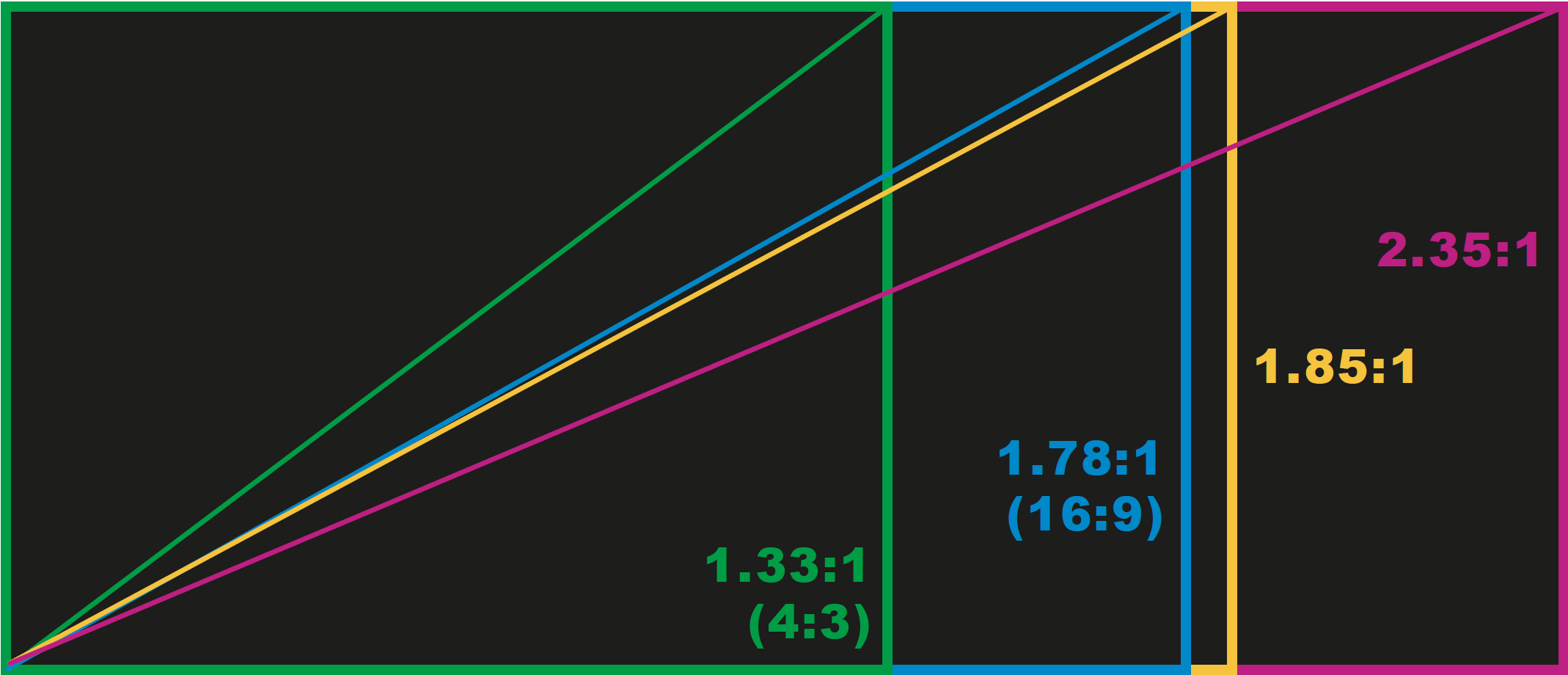4:3 (1.33:1)
4:3 (or 1.33:1) is the standard TV aspect ratio we have been used to for the past 50 odd years. 4 is the horizontal and 3 the vertical, of course. The problem with 4:3 is that it doesn't reflect our natural vision. Humans have better lateral vision than vertical. In effect, our vision is widescreen, therefore widescreen TV and film seems naturally more appealing to us.

Widescreen
Widescreen refers to any aspect ratio wider than 4:3. The problem is that there a load of them.
Widescreen TVs
Widescreen TVs typically have a screen aspect ration of 14:9 (1.56:1) or 16:9 (1.78:1) which is narrower than both cinematic widescreen standards (1.85:1, 2.35:1).
1.85:1 - Cinematic film
The original widescreen film format developed in the 1950s to help cinema compete with TV. This is still a popular format.
2.35:1 - Cinematic film
2.35:1 (also known as ... Anamorphic Scope, CinemaScope, Panovision) is not as old as 1.85:1. This aspect ratio involves filming with a special anamorphic lens fitted to the camera to squeeze the image horizontally onto the film. A similar lens fitted to a cinema projector un-squeezes them during projection to the 2.35:1 ratio.
Displaying cinematic widescreen on TVs
Clearly neither 4:3, 14:9 or 16:9 TVs are ideally suited to displaying cinematic widescreen films. There are 3 popular solutions.
1. Pan & scan
This method involves a technician cropping a 2.35:1 or 1.85:1 film to the TV aspect ratio by ensuring that the part of the frame that contains essential action is retained and the rest is discarded. You therefore do not get to see the whole frame as the director intended but your TV screen is filled.
2. Letterbox
The complete frame is displayed with black "bars" above and below. Obviously some of the potential resolution of the screen is wasted.
3. Anamorphic DVD and TV
This is a process whereby the 2.35:1 or 1.85:1 frame is squeezed (distorted) to fit the 14:9 or 16:9 screen ratio of a widescreen TV. This is acceptable because the distortion isn't too great. However, it will be unacceptable on a 4:3 TV which will resort to showing the frame in letterbox format.
Many widescreen TVs can detect the aspect ratio of DVD and broadcast programme material and automatically choose the best compromise. My Sony Vega has Smart, 4:3, 14:9, Zoom and Wide settings. It will also intelligently choose various degrees of letterboxing to suit the material.
More on anamorphic widescreen DVD
When a DVD says that it is anamorphic, it means that the film has been transferred onto the disc with extra vertical scan lines (a higher resolution), making it ideally suited to playback on a widescreen TV.
During playback, the information 'un squeezes' to stretch across the wide screen, and thanks to those extra lines, the vertical part of the image doesn't lose clarity.
Anamorphic films will always look better on widescreen televisions. Regular TVs will display the widescreen picture as usual, in a letterbox format and ignoring the extra lines, but can occasionally throw up digital artifacts (blocky chunks of colour).
